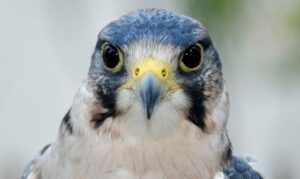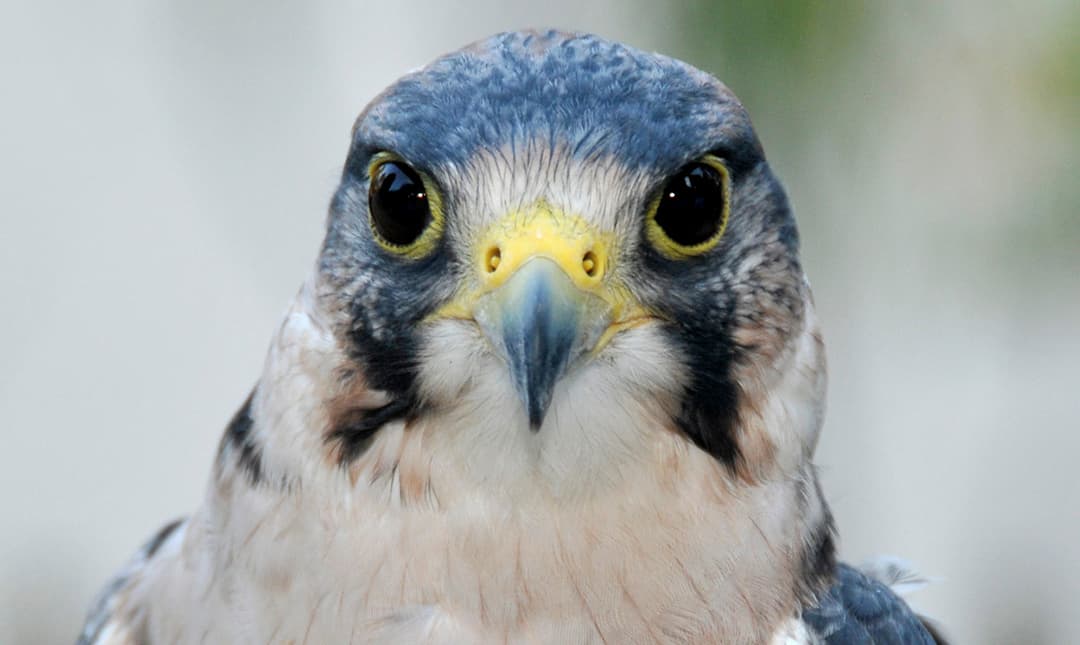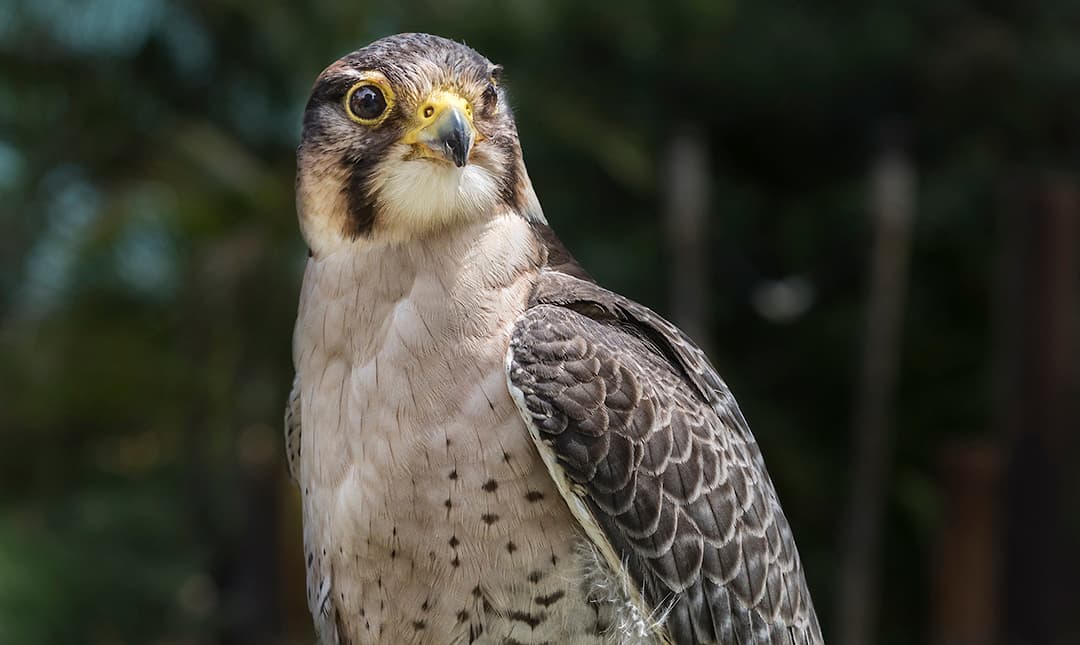About
Though less powerful as some other raptors, lanner falcons are very agile and can reach speeds of 90 miles per hour. In the wild, they are often seen hunting in pairs. The female uses her keen eyesight to spot prey (e.g., smaller birds), and then the male, following close behind her, will dart in to kill the unsuspecting prey in mid-air. If the initial strike with talons fails, the lanner falcon uses a special notch in its beak to dislocate the neck vertebrae. Lanner falcons have been documented following people walking in grasslands to take advantage of any prey they may flush out of hiding.
Lanner falcons are monogamous and pair for life. They do not build their own nests but instead make use of old nests of other birds. Females lay three or four eggs and, although both parents incubate the eggs, the female’s primary role is incubating and defending the nest from predators while the male hunts for food for the pair. The chicks hatch in about a month and grow their flight feathers in about five weeks. They are completely independent at about two months of age.


Habitat
Africa, the Mediterranean region, and parts of western Asia. They inhabit cliffs near savannas, grasslands, and deserts.
Diet
These carnivores eat smaller birds such as pigeons, jackdaws, and poultry as well as bats, rodents, reptiles, and insects, including grasshoppers and locusts.
Physical Characteristics
Body length is 16 to 20 inches, with the females being slightly larger. Weight is up to two pounds, and wingspan is 37 to 41 inches. Lifespan is 15 to 17 years.
LOCATION WITHIN THE ZOO
You may see this bird take flight in the World of Birds Show.


